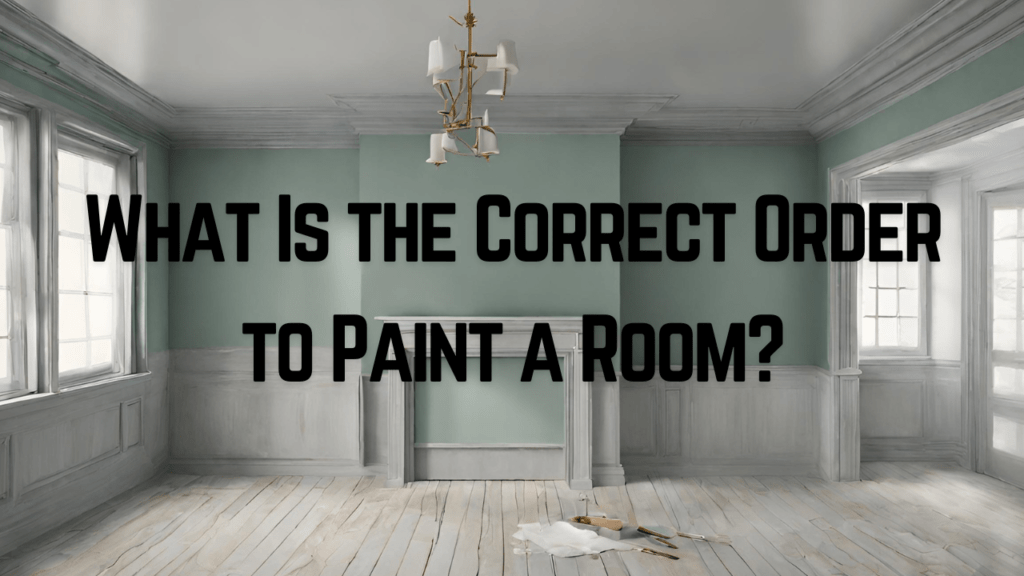
What is the correct order to paint a room? The correct order to paint a room involves several steps to ensure a smooth and professional finish. Here is a detailed guide on how to paint a room in the most efficient and effective order:
What Is the Correct Order to Paint a Room?
Step 1: Prepare the Room
Before you start painting, preparing the room properly is crucial. This includes:
1.1 Clear the Room: Remove furniture, decorations, and any items that may obstruct your painting.
1.2 Protect Floors and Furniture: Cover the floors with drop cloths or plastic sheets to prevent paint splatters. Use painter’s tape to protect baseboards, trim, and any fixtures that won’t be painted.
1.3 Repair Wall Imperfections: Inspect the walls for cracks, holes, or dents. Fill them with a spackling compound and smooth the surface once it’s dry.
Step 2: Gather Your Painting Supplies
Make sure you have all the necessary supplies handy, including:
2.1 Paint: Choose the desired paint color and finish (e.g., matte, satin, semi-gloss) for your room.
2.2 Paint Brushes and Rollers: Use high-quality brushes and rollers for your paint type and finish.
2.3 Paint Tray and Liner: Pour paint into a tray and use a liner for easy cleanup.
2.4 Painter’s Tape: Apply painter’s tape to edges and corners to create clean lines.
2.5 Drop Cloths: Protect your floors and furniture with drop cloths or plastic sheets.
2.6 Paint Stirrer: Stir the paint thoroughly before starting to ensure an even color.
2.7 Paint Primer (if needed): If you paint over dark or uneven surfaces, a primer may be necessary for better adhesion and coverage.
Step 3: Start with the Ceiling
Painting the ceiling first is typically the best approach. Follow these steps:
3.1 Cut-In: Use a paintbrush to “cut in” or paint the edges and corners of the ceiling.
3.2 Roll: Use a roller with an extension pole to paint the rest of the ceiling evenly. Work in small sections at a time.
Step 4: Paint the Walls
Once the ceiling is dry, you can move on to the walls:
4.1 Cut-In: Use a paintbrush to cut in around the edges of the walls, including corners, door frames, and window frames.
4.2 Roll: Use a roller to paint the walls in small, manageable sections. Start at the top and work your way down, maintaining a “W” or “M” pattern to ensure even coverage.

Step 5: Paint the Trim and Doors
After the walls are dry, you can focus on the trim and doors:
5.1 Trim: Use a smaller paintbrush to paint the baseboards, door trim, and window trim. Be precise to achieve clean lines.
5.2 Doors: If you’re painting doors, remove them from their hinges, paint them flat, and allow them to dry completely before rehanging.
Step 6: Allow to Dry and Apply Additional Coats
Let each coat of paint dry according to the manufacturer’s instructions. In most cases, this may take a few hours to overnight. Apply additional coats if necessary for better coverage.
Step 7: Clean Up
Remove the painter’s tape and plastic sheeting once you’ve finished painting and the paint is dry. Clean your brushes, rollers, and paint trays thoroughly with water or the appropriate cleaning solution.
Step 8: Replace Furniture and Decorations
After completely drying the room, you can return the furniture and decorations to their original positions.
In conclusion, following this step-by-step guide will help you achieve a professionally painted room. Remember to take your time, be patient, and pay attention to detail to ensure a flawless finish. If you have any questions or need professional painting services, please don’t hesitate to get in touch with Fife Trades for a quote. You can contact them at fifetrades@gmail.com or visit their website’s Contact Us page at https://fifetrades.co.uk/contact/.
